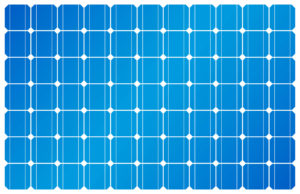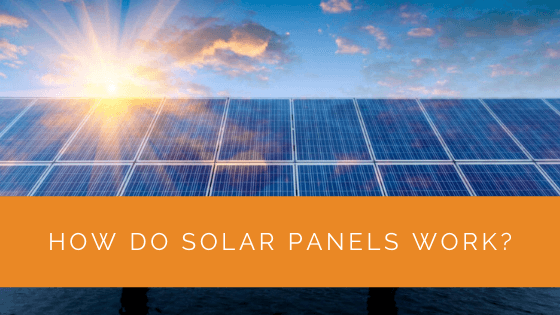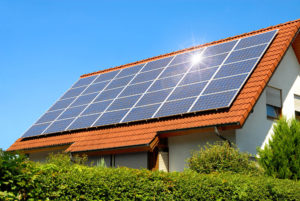The world is rapidly moving towards a cleaner and greener future. As we become more environmentally conscious, the need for renewable energy sources becomes increasingly important. Solar panels, in particular, have gained widespread popularity in recent years. They are not only an eco-friendly alternative to traditional power sources, but they are also cost-effective in the long run. Understanding how solar panels work and harness the power of the sun to generate electricity is a fascinating journey into the world of renewable energy.
In this article, we will take you on a deep dive into the science behind solar panels. We will explore the inner workings that allow them to convert sunlight into a sustainable source of power. From the physics of photovoltaic cells to the technology that enables solar panels to store energy, we will demystify the process and mechanisms that make solar panels an essential part of the clean energy revolution. So, whether you are an environmental enthusiast or a curious learner, join us on this exciting journey to discover the wonders of solar energy.
Contents
- 1 Key Takeaways
- 2 How Do Solar Panels Operate: A Step by Step Guide
- 3 What Does a Solar Inverter Do?
- 4 Can a Solar Panel System Run on Batteries?
- 5 Benefits of Using Solar Panels
- 6 The Disadvantage of Using Solar Panels
- 7 Case Study: Maximising Solar Panel Efficiency in a Residential Setting
- 8 Expert Insights From Our Solar Panel Installers About Solar Panel Efficiency and Benefits
- 9 Discover the Power of Solar with Solar Panels Network
- 10 Wrapping Up
Key Takeaways
- Solar panels work by using photovoltaic (PV) cells made of silicon to convert solar energy into electricity through a series of steps: generating an electric field when sunlight hits the panels, converting the electricity from direct current (DC) to alternating current (AC), distributing AC throughout the building, and reducing electricity bills while decreasing carbon footprint.
- Solar inverters are crucial for transforming the DC electricity solar panels generate into AC power, offering protection and monitoring functions. Microinverters, designed for each panel, are becoming popular for their efficiency and system robustness.
- Solar panel systems can benefit users by reducing electricity costs, providing a clean and renewable energy source, and requiring relatively low maintenance. However, they come with initial installation costs, are weather-dependent, and require sufficient roof space.
How Do Solar Panels Operate: A Step by Step Guide
Solar panels comprise photovoltaic (PV) cells that convert solar energy to electricity. Photovoltaic solar panels consist of numerous solar cells made of silicon and have a positive and negative layer that creates an electric field.
When hit by photons from sunlight, they create a photoelectric effect that helps generate electricity. So, how do they convert sunlight into electricity? Here is a basic step-by-step guide:
Step 1
Once the solar energy hits the panels, an electric field is created. Each of these panels is made of silicon cells or glass layers. The panels are joined to form an array to get the maximum solar energy for generating electricity for bigger buildings, like an office.
Step 2
The electricity generated from the panels flows into a conductive wire and passes on to the inverter. The panels generate electricity in direct current (DC), which is unsuitable for powering your houses. Hence, these inverters efficiently convert them to Alternating current (AC), utilised as a house power source.
Step 3
The Alternating Current runs through the electric panel and is distributed equally in your house for your usage. Since the electricity generated runs along the same electric grid, you need not worry about changing your home appliances.
Step 4
The Alternating Current is then used to power the entire building or a house and hence helps reduce the electricity bills. It also helps reduce the dependency on electricity and, in turn, keeps a check on the carbon footprint.
You can even keep track of your electricity usage with the help of an electric meter. The solar panels can sometimes collect some surplus solar energy at daylight hours more than your requirement. Hence, you can send them back to the grid to save energy and some credits.

What Does a Solar Inverter Do?
The solar inverter takes up the direct current from the array and transforms it to create an Alternating Current. Investors are a crucial part of the solar power system. Apart from converting the DC to AC power, they offer ground fault protection and voltage and energy production stats on AC and DC circuits.
Microinverters are slowly replacing central inverters for solar panels due to their efficient performance and maximum solar energy usage. These micro-inverters are devised for each panel and not the entire solar system. Hence, a defect in one panel will not affect the entire system’s performance.
Can a Solar Panel System Run on Batteries?
On days when the sun is bright, you can charge your solar cells and panels fully. At times, the light captured can be in excess for your daily use and can get shifted to the grid. Apart from using the grid, you can use a solar battery system for your existing rooftop solar panel.
The extra amount of solar energy collected can be used to charge the batteries. Hence, you can use these batteries as backup power when there is a need for more electricity than usual. Also, you can check your monthly electricity bills if you pull electric power from your batteries instead of the electric grid.
Benefits of Using Solar Panels
Installation of solar panels, be it rooftop or commercial solar panels, provides us a wide range of advantages. Such as;
Cost Savings
Since solar panels generate electricity with the help of sunlight, it reduces your dependency on electricity. It helps cut down the cost of your electricity bills and saves you tons of money every month.
Clean and Green Energy Source
With the use of solar panels, we get access to harness the energy from the sun. You can use this renewable energy source from anywhere across the world. Being a renewable energy source, you need not be worried about exhausting solar energy and producing electricity all year.
Low Maintenance Solar Power System
Generally, the solar panel requires lower maintenance, so you need not fret much about its repair work. The roof solar systems are easier to manage and require basic cleaning occasionally. Most of the panels come with a warranty; thus, you can expect an efficient and long-lasting performance from them.
The Disadvantage of Using Solar Panels
- Initial high installation and purchase cost
- Heavily dependent on weather and lighting conditions. Since solar panels depend on sunlight as their energy source, the efficiency may drop considerably on cloudy days and even at night.
- A solar system needs adequate space to be installed on a roof. The size of your roof will determine the number of solar panels that can be added. Hence, these clean sources of power may take up a lot of your free space, without a doubt.

Case Study: Maximising Solar Panel Efficiency in a Residential Setting
Background
A suburban household in the UK decided to transition to solar energy to reduce their carbon footprint and cut down on energy costs. The house had ample roof space, allowing for a comprehensive solar panel installation.
Implementation
- Site Assessment and Design: A detailed site assessment was conducted to determine the optimal placement of solar panels. The assessment included measuring the roof’s angle, orientation, and shading from nearby trees and buildings.
- Installation: The household opted for a 6kW system using high-efficiency monocrystalline panels, known for their superior performance in various lighting conditions. Microinverters were installed on each panel to maximise efficiency and allow for individual panel monitoring.
- Battery Storage: To further enhance the system’s efficiency, a battery storage system was installed. This system stored excess energy generated during peak sunlight hours, which could then be used during the evening or on cloudy days.
- Monitoring and Maintenance: An online monitoring system was set up to track energy production and usage in real time. Regular maintenance schedules were established to ensure the panels remained clean and free of debris, optimising their performance.
Results
- Significant Cost Savings: The household saw a dramatic reduction in their monthly electricity bills, saving approximately 70% on energy costs. The savings were even more pronounced during the summer months when sunlight was abundant.
- Environmental Impact: By switching to solar energy, the household reduced their annual carbon footprint by over 3 tons, contributing to broader environmental sustainability goals.
- Energy Independence: The addition of a battery storage system provided the household with a reliable backup power source, reducing their reliance on the grid and offering protection against power outages.
Summary
This case study highlights the successful integration of solar technology in a residential setting, showcasing the benefits of reduced energy costs, increased energy independence, and positive environmental impact. The use of advanced technology, such as microinverters and battery storage, played a crucial role in maximising the system’s efficiency and overall performance.
Expert Insights From Our Solar Panel Installers About Solar Panel Efficiency and Benefits
Understanding the fundamental workings of solar panels is crucial for anyone looking to invest in renewable energy. The core of solar power lies in the photovoltaic effect, where solar cells convert sunlight into electricity, providing a sustainable and clean energy source.
Senior Renewable Energy Consultant
While initial costs can be a barrier, the long-term benefits of solar panels, including substantial savings on electricity bills and environmental sustainability, make them a worthwhile investment for both residential and commercial applications.
Solar Energy Specialist
The use of microinverters has revolutionised solar technology, allowing for more efficient energy conversion and monitoring at the panel level. This innovation significantly improves system resilience and energy output, especially in less-than-ideal conditions.
Solar System Engineer
Discover the Power of Solar with Solar Panels Network
Are you navigating the world of solar installations? Look no further than Solar Panels Network, the UK’s trusted partner in harnessing the sun’s potential. Our dedication goes beyond just installations; we’re on a mission to transform how homeowners and businesses across the UK perceive and utilise energy. By choosing us, you’re reducing your carbon footprint and making a smart financial move that promises savings for years ahead. Contact us today and embark on your solar journey.
Wrapping Up
Solar technology has garnered much attention in recent times due to the various benefits it offers humankind. Now that you know the basics of how a solar panel works, it is time to invest in this clean and eco-friendly energy source.
With the installation of solar panel systems, you get the chance to keep a check on your carbon footprint and make a smart choice of saving your hard-earned money.
About the Author
Solar Panels Network stands at the forefront of solar energy solutions, driven by a team of seasoned solar engineers and energy consultants. With over decades of experience in delivering high-quality solar installations and maintenance, we are committed to promoting sustainable energy through customer-centric, tailored solutions. Our articles reflect this commitment, crafted collaboratively by experts to provide accurate, up-to-date insights into solar technology, ensuring our readers are well-informed and empowered in their solar energy decisions.


